- News
- Reviews
- Bikes
- Accessories
- Accessories - misc
- Computer mounts
- Bags
- Bar ends
- Bike bags & cases
- Bottle cages
- Bottles
- Cameras
- Car racks
- Child seats
- Computers
- Glasses
- GPS units
- Helmets
- Lights - front
- Lights - rear
- Lights - sets
- Locks
- Mirrors
- Mudguards
- Racks
- Pumps & CO2 inflators
- Puncture kits
- Reflectives
- Smart watches
- Stands and racks
- Trailers
- Clothing
- Components
- Bar tape & grips
- Bottom brackets
- Brake & gear cables
- Brake & STI levers
- Brake pads & spares
- Brakes
- Cassettes & freewheels
- Chains
- Chainsets & chainrings
- Derailleurs - front
- Derailleurs - rear
- Forks
- Gear levers & shifters
- Groupsets
- Handlebars & extensions
- Headsets
- Hubs
- Inner tubes
- Pedals
- Quick releases & skewers
- Saddles
- Seatposts
- Stems
- Wheels
- Tyres
- Health, fitness and nutrition
- Tools and workshop
- Miscellaneous
- Tubeless valves
- Buyers Guides
- Features
- Forum
- Recommends
- Podcast
review
£3,350.00
VERDICT:
A quality frameset that works both on the flat and the climbs, and well specced for the money
Well balanced handling gives confidence in the corners
Very easy bike to ride fast
A firmer ride than some of the competition
Those with large thighs might brush the top tube
Weight:
8,230g
Contact:
At road.cc every product is thoroughly tested for as long as it takes to get a proper insight into how well it works. Our reviewers are experienced cyclists that we trust to be objective. While we strive to ensure that opinions expressed are backed up by facts, reviews are by their nature an informed opinion, not a definitive verdict. We don't intentionally try to break anything (except locks) but we do try to look for weak points in any design. The overall score is not just an average of the other scores: it reflects both a product's function and value – with value determined by how a product compares with items of similar spec, quality, and price.
What the road.cc scores meanGood scores are more common than bad, because fortunately good products are more common than bad.
- Exceptional
- Excellent
- Very Good
- Good
- Quite good
- Average
- Not so good
- Poor
- Bad
- Appalling
The latest iteration of the Trek Émonda focuses on aerodynamics more than ever before, which makes this SL6 Pro one very quick and efficient road bike. The stiff frameset offers a firm yet fun ride, while the component choice keeps the weight down to exploit that stiffness on the climbs. It's a very good all-round package.
> Buy now: Trek Emonda SL 6 Pro 2021 from All TerrainCycles for £3350.00
Ride
This version of the Émonda was launched back in the middle of June, and I was lucky enough to get my hands on the bike about a week before that. I was able to give my initial findings in a First Ride piece here.
To be honest, not a huge amount has changed from my early thoughts, but the extra miles and plenty of different roads and conditions have cemented just how much fun the Trek is to live with.
First up, the comfort.
I picked up on the fact that the SL6 Pro has quite a firm ride – a little bit old school, dare I say. By that I mean that a lot of carbon fibre frames have become much more comfortable over the years as designers and manufacturers have learnt about carbon fibre grades, tube profiles and, more importantly, the layup of the composite material.
The Cube Attain GTC SL I tested recently highlighted this in the way that it really managed to reduce road buzz while retaining plenty of feedback through the frame and fork.
This isn't a criticism of the Trek at all, it just wasn't quite what I was expecting. I like it; I'm a big believer in ultimate performance over comfort when it comes to race bikes, and that is exactly what the Émonda delivers.
Stiffness throughout the fork and the lower half of the frame is very impressive, and means the Trek is responsive to your inputs. The wide bottom bracket shell allows for a large down tube and chunky chainstays to reduce flex when you are really nailing it, while the front end backs this up via the tapered head tube and firm fork legs. Sprinting and climbing are all taken in the Émonda's stride.
As you'd expect from a race bike, the riding position can be set up to be pretty aggressive – with a relatively short 151mm head tube length on this 56cm model I could achieve a low handlebar-to-saddle drop to aid the aerodynamics, especially when in the drops.
The rest of the geometry follows the same theme with a 73.5-degree head angle and a relatively short wheelbase for a disc-equipped frame (the chainstays are often a fair bit longer than those on rim-braked frames because of the extra axle width at the rear dropouts) at just 983mm.
Trek has achieved a good balance here with the Émonda I reckon.
The shorter wheelbase makes it nippy, which allows for snappy direction changes at high speed, yet it's managed to tame the handling just enough that the Émonda never becomes a handful unless you do something really stupid.
In my First Ride piece I mentioned that I hadn't managed to point the Trek at my favourite test hill, one that is fast and twisty with off-camber bends and chicanes. It really tests every part of a bike's handling in a blur.
Well, I have now, about five or six times, and the Émonda really impressed. It has the quickness in the steering and the overall agility to be pushed very hard into the corners.
After a night of heavy rain, gravel had been washed out into the lane slightly out of sight as I went into a fast left-hander at about 45mph; I dabbed the brakes a little, but seeing the grit and stones spanning the entire road there was no real way out of it. Letting the bike hit the gravel and predicting where the slide was probably going to end was the only option, and it was a sketchy couple of seconds.
As the front tyre regained grip on the asphalt there was a second where the still-sliding rear wanted to get in front, but the Trek's well-balanced handling allowed me to quickly regain control and blast to the bottom of the hill.
In less extreme circumstances the Émonda is an absolute hoot to ride downhill, with just slight adjustments to body position and the handlebar allowing you to flow from corner to corner.
On longer rides the Trek is just as well mannered; it is a very easy bike to ride quickly even when fatigue can kick in or when you are on unfamiliar roads.
The stiffness I mentioned earlier doesn't come through as a negative on higher mileage jaunts, especially if you get on with the saddle and have a decent pair of shorts on. The three- to four-hour rides I used the Trek on were a lot of fun. Unleash the power for the fun bits and then when you are on the flat, straight slogs you can just hunker down and keep the pedals turning over.
The only thing I needed to do was to shift the saddle 5mm closer to the bar than I would normally have it, because of the width of the top tube as it flows into the seatstays either side of the seat tube. I have quite large thighs and I could feel them rubbing on the frame every pedal revolution when I first started riding the Trek.
Frame and fork
The Émonda has always been the lightweight bike of Trek's road range, leaving outright speed to the Madone, but for this latest model Trek has incorporated more aerodynamic profiles in the Émonda's design.
Unlike most aero bikes, though, the Émonda's frame doesn't focus on being fast in a straight line or at high speed, it is a climbing bike after all. Instead the engineers have focused on 'unsteady aerodynamics', which fit in with the much lower speeds found when ascending.
Most of the attention has been placed on the front end, including the head tube and down tube. The top-end SLR models use the Bontrager XXX aero handlebar/stem combo which further increases the benefits, but that isn't available on the SL options.
The SLR models also use a new OCLV 800 grade carbon fibre while the SLs use the 500 series, which increases the weight a bit, although a claimed frame weight of 1,142g and 380g for the fork is far from shabby.
If wind cheating is your main goal then it's worth noting that the Émonda is optimised for 25mm tyres, as that is the most common size used for racing, but if you want something a bit wider 28mm will fit while still allowing 6mm of space around the tyre.
As you'd expect on an aero-based bike, the Émonda has full internal cable routing but this is taken to an extra level compared with most frames, with the cables and hoses leaving the handlebar and entering the frame through the spacers rather than the head tube or down tube. This gives much cleaner lines at the front.
You won't find a standard seatpost either. The Émonda's seat tube continues up past the top tube by a fair old way and then an external seat mast is placed over the top; you tighten the hex bolt to clamp it into place at the right saddle height.
The Émonda range is now completely disc brake-equipped which to my mind is a bit of a shame as I am a big fan of rim brakes, and it would certainly bring the weight down for a bike aimed at climbing.
Many manufacturers are seeing sales of disc models outstripping rim options by a large margin, though, so it is kind of inevitable. There is also the cost – the Émonda is available in seven sizes so that'd be 14 different moulds required if Trek offered both brake options.
The Émonda comes with flat mounts, as you'd expect, and 12mm thru-axles front and rear.
I mentioned the wide bottom bracket shell earlier and this is normally only achievable by using a press-fit BB, where the bearing cups are pressed into the frame. If tolerances aren't adhered to, creaking can occur, especially after water or grit gets between the mating faces, which is why we've seen many brands return to external threaded options.
Trek has gone for what is possibly the best of both worlds with the T47 system. First introduced by Chris King and Oregon's Argonaut Cycles, they thread into the bottom bracket shell which allows it to be wider, increasing stiffness without affecting the width between the pedals (Q-factor).
If you want a more in-depth look at what changes and design tweaks were made to achieve this new Émonda frameset then it'd be worth checking out Mat's full breakdown here.
Wheels and tyres
Trek says that the SL 6 Pro comes with all the lightweight components you need as standard, so there is no need to upgrade. You could save a few grams here and there, but overall it is a pretty complete package.
This model is the first carbon bike in the line-up that comes with a set of carbon fibre wheels. The 35mm Bontrager Aeolus Elite 35s are 35mm deep and are tubeless ready.
It's a good set of wheels for a whole range of riding styles: shallow enough to work on the climbs and just about deep enough to give you a small aerodynamic gain without being affected by crosswinds. Comparing the price of the near-identical SL 6 suggests you are getting them for just £450 too.
Reliability isn't an issue as they took on everything that was put in their way over the test period, and should anything happen and they get damaged Trek will replace or repair them for free in the first two years of ownership.
Wrapped around the wheels are a pair of Bontrager R2 Hard-Case Lite tyres. They are all right in terms of rolling resistance, grip and durability, but their 60tpi casing does give them a bit of a 'wooden' feel. You aren't getting a whole lot of suppleness which would really benefit the frameset, so I'd definitely upgrade when they wear out.
I've been using the R3 Hard Case Lites recently and they are a much better tyre, so something like that would be a good upgrade if you want to keep the Bonty/Trek theme going.
Drivetrain and brakes
On the SL 6 Pro, Trek is giving you a full Shimano Ultegra hydraulic/mechanical groupset and it suits the bike very well. You are getting near-Dura-Ace performance but at a much reduced price.
Trek has specced a 52/36-tooth semi-compact chainset and an 11-30 cassette, which is a great choice of gear ratios for a bike of this style. There are plenty of top end gears for speed work while the 30-tooth sprocket will give you an extra bailout gear over the more usual 28T found on the majority of race bikes.
The gear shifts from Ultegra are top notch. You get quite a light feel at the levers, but one that also gives a very nicely defined click so you can be sure that the shift has taken place.
When it comes to the braking, Trek has chosen to fit 160mm rotors front and back, which give more than enough power for a bike of this type.
Shimano's hydraulic systems are very powerful but also easily modulated thanks to loads of feel through the levers, allowing you to stop quickly without the fear of locking up the front tyre, even in the wet.
Finishing kit
All of the finishing kit is supplied by Bontrager, Trek's in-house parts department, and it's all decent quality stuff.
The handlebar is the Bontrager Elite VR-C which is an aluminium alloy model with a short reach and a shallow drop, making it ideal for a whole host of different riders' proportions. Helping that is the fact that different size frames get a different width bar, ranging from 38cm up to 44cm.
It's the same for the Bontrager Pro stem: the smallest 47cm bike gets a 70mm unit, with the 62cm extending that out to 110mm. The stem on each frame size seems to come up a bit shorter than most bikes of this type, but it seems to work.
I got on fine with the Aeolus Comp saddle. Its shape is well suited to riding hard and fast, and I like the firm padding which gives you a good platform to push against when you are really hammering it. (There's a separate review of it here.)
Value
This SL 6 Pro model has an rrp of £3,350, which isn't a bad deal for what you are getting here with the aero carbon frame, fork and deep-section wheels.
> Buyer’s Guide: 21 of the best 2020 aero road bikes
The similarly themed Scott Addict RC 30 is £3,199 and also come comes with an Ultegra groupset, but it is begging for an upgrade to the wheelset. It is light, though, at just 7.88kg.
If it's aero that you want then there is the Orro Venturi. The closest model in price is £3,299.99; you only get alloy wheels, but you are getting Ultegra Di2 for the gear shifting.
Conclusion
Overall, the Émonda is a very good bike. The aero tweaks have turned it into a very fast and efficient bike that still manages to deliver on the weight front and this SL 6 Pro model is so well specced there's no need to update anything when it comes to the components, just the tyres when they wear out.
Verdict
A quality frameset that works both on the flat and the climbs, and well specced for the money
road.cc test report
Make and model: Trek Emonda SL 6 Pro 2021
Size tested: 56cm
About the bike
List the components used to build up the bike.
Trek lists:
Front wheel Bontrager Aeolus Elite 35, OCLV Carbon, Tubeless Ready, 35 mm rim depth, 100x12 mm thru axle
Rear wheel Bontrager Aeolus Elite 35, OCLV Carbon, Tubeless Ready, 35 mm rim depth, Shimano 11-speed freehub, 142x12 mm thru axle
Tyre Bontrager R2 Hard-Case Lite, aramid bead, 60 tpi, 700x25 c
Max tyre size 28c
*Shifter Size: 47, 50, 52
Shimano Ultegra R8025, short-reach lever, 11-speed
Size: 54, 56, 58, 60, 62
Shimano Ultegra R8020, 11-speed
Front derailleur Shimano Ultegra R8000, braze-on
Rear derailleur Shimano Ultegra R8000, short cage, 30T max cog
*Crank Size: 47
Shimano Ultegra R8000, 52/36, 165 mm length
Size: 50, 52
Shimano Ultegra R8000, 52/36, 170 mm length
Size: 54, 56, 58
Shimano Ultegra R8000, 52/36, 172.5 mm length
Size: 60, 62
Shimano Ultegra R8000, 52/36, 175 mm length
Bottom bracket Praxis, T47 threaded, internal bearing
Cassette Shimano Ultegra R8000, 11-30, 11-speed
Chain Shimano Ultegra HG701, 11-speed
Max. chainring size 1x: 50T; 2x: 53/39T
Components
Saddle Bontrager Aeolus Comp, steel rails, 145 mm width
*Seatpost Size: 47, 50, 52, 54
Bontrager carbon seat mast cap, 20 mm offset, short length
Size: 56, 58, 60, 62
Bontrager carbon seat mast cap, 20 mm offset, tall length
*Handlebar Size: 47, 50
Bontrager Elite VR-C, alloy, 31.8 mm, 100 mm reach, 124 mm drop, 38 cm width
Size: 52
Bontrager Elite VR-C, alloy, 31.8 mm, 100 mm reach, 124 mm drop, 40 cm width
Size: 54, 56, 58
Bontrager Elite VR-C, alloy, 31.8 mm, 100 mm reach, 124 mm drop, 42 cm width
Size: 60, 62
Bontrager Elite VR-C, alloy, 31.8 mm, 100 mm reach, 124 mm drop, 44 cm width
Handlebar tape Bontrager Supertack Perf tape
*Stem Size: 47
Bontrager Pro, 31.8 mm, Blendr-compatible, 7-degree, 70 mm length
Size: 50
Bontrager Pro, 31.8 mm, Blendr-compatible, 7-degree, 80 mm length
Size: 52, 54
Bontrager Pro, 31.8 mm, Blendr-compatible, 7-degree, 90 mm length
Size: 56
Bontrager Pro, 31.8 mm, Blendr-compatible, 7-degree, 100 mm length
Size: 58, 60, 62
Bontrager Pro, 31.8 mm, Blendr-compatible, 7-degree, 110 mm length
Brake Shimano Ultegra hydraulic disc
Brake rotor Shimano RT800, 160 mm, CenterLock
Tell us what the bike is for and who it's aimed at. What do the manufacturers say about it? How does that compare to your own feelings about the bike?
Trek says, "Émonda SL 6 Disc Pro is the first carbon road bike in the line-up that gives you lightweight carbon wheels to match your lightweight frame. Aero tube shaping, disc brakes and a high-performance drive train make it a great option for roadies who value great handling and lots of speed."
Where does this model sit in the range? Tell us briefly about the cheaper options and the more expensive options
There are five models in the range starting with the SL 5 which comes with a Shimano 105 groupset for £2,725, finishing off with the SL 7 with SRAM eTap at £5,250.
A frameset is also available for £2,200.
Frame and fork
Overall rating for frame and fork
8/10
Tell us about the build quality and finish of the frame and fork?
A well made and finished frame and fork.
Tell us about the materials used in the frame and fork?
Frame – Ultralight 500 Series OCLV Carbon, Ride Tuned performance tube optimisation, tapered head tube, internal routing, DuoTrap S-compatible, flat-mount disc, 142x12 mm thru axle
Fork – Emonda SL full carbon, tapered carbon steerer, internal brake routing, flat-mount disc, 12x100 mm thru axle
Tell us about the geometry of the frame and fork?
The geometry is race orientated with a steepish head angle and a short head tube length.
How was the bike in terms of height and reach? How did it compare to other bikes of the same stated size?
The stack and reach figures are pretty typical for this size and kind of bike. This 56cm comes with a stack of 563mm and a reach of 391mm.
Riding the bike
Was the bike comfortable to ride? Tell us how you felt about the ride quality.
Overall it's fine, although it does have a firmer ride than a lot of new carbon fibre frames.
Did the bike feel stiff in the right places? Did any part of the bike feel too stiff or too flexible?
Stiffness is very impressive, especially around the bottom bracket area.
How did the bike transfer power? Did it feel efficient?
Efficiency is very impressive, it is a proper point and shoot bike.
Was there any toe-clip overlap with the front wheel? If so was it a problem?
No.
How would you describe the steering? Was it lively neutral or unresponsive? Responsive.
Tell us some more about the handling. How did the bike feel overall? Did it do particular things well or badly?
The handling is very well balanced, making the Trek easy to ride whether you are just cruising along or pushing it hard through the bends.
Which components had the most effect (good or bad) on the bike's comfort? would you recommend any changes?
I liked the saddle, it was firm yet comfortable for all sorts of rides.
Which components had the most effect (good or bad) on the bike's stiffness? would you recommend any changes?
The Bontrager wheels offer loads of stiffness even when riding hard, out of the saddle.
Which components had the most effect (good or bad) on the bike's efficiency? would you recommend any changes?
I'd change the tyres for something a little more supple which would help you achieve higher speeds in the bends.
Rate the bike for efficiency of power transfer:
8/10
Rate the bike for acceleration:
8/10
Rate the bike for sprinting:
8/10
Rate the bike for high speed stability:
8/10
Rate the bike for cruising speed stability:
8/10
Rate the bike for low speed stability:
8/10
Rate the bike for flat cornering:
8/10
Rate the bike for cornering on descents:
9/10
Rate the bike for climbing:
8/10
The drivetrain
Rate the drivetrain for performance:
9/10
Rate the drivetrain for durability:
8/10
Rate the drivetrain for weight:
8/10
Rate the drivetrain for value:
6/10
Tell us some more about the drivetrain. Anything you particularly did or didn't like? Any components which didn't work well together?
The Shimano Ultegra groupset can't really be faulted. Gears and brakes offer great performance and reliability.
Wheels and tyres
Rate the wheels for performance:
8/10
Rate the wheels for durability:
8/10
Rate the wheels for weight:
8/10
Rate the wheels for comfort:
8/10
Rate the wheels for value:
7/10
Tell us some more about the wheels.Did they work well in the conditions you encountered? Would you change the wheels? If so what for?
It's good to see a quality set of carbon wheels on a bike as standard at this price. They performed well in all sorts of conditions and seem to be durable.
Rate the tyres for performance:
7/10
Rate the tyres for durability:
8/10
Rate the tyres for weight:
7/10
Rate the tyres for comfort:
7/10
Rate the tyres for value:
6/10
Tell us some more about the tyres. Did they work well in the conditions you encountered? Would you change the tyres? If so what for?
The Bontrager R2s aren't bad, but the SL 6 Pro deserves something faster and grippier.
Controls
Rate the controls for performance:
8/10
Rate the controls for durability:
8/10
Rate the controls for weight:
8/10
Rate the controls for comfort:
8/10
Rate the controls for value:
7/10
Tell us some more about the controls. Any particularly good or bad components? How would the controls work for larger or smaller riders?
Decent quality in-house kit that suits the bike well.
Your summary
Did you enjoy riding the bike? Yes
Would you consider buying the bike? Yes
Would you recommend the bike to a friend? Yes
How does the price compare to that of similar bikes in the market, including ones recently tested on road.cc?
For a semi-aero bike the Émonda is pretty well priced, like against the Scott and Orro mentioned in the review.
Rate the bike overall for performance:
8/10
Rate the bike overall for value:
6/10
Use this box to explain your overall score
The Émonda's new aero frameset means that not only is it a good climber, it also works well on the flat sections too. The overall quality is very good and you are getting a well chosen spec. The firm ride might not be ideal for those who focus more on comfort, though.
About the tester
Age: 41
I usually ride: This month's test bike My best bike is: B'Twin Ultra CF draped in the latest bling test components
I've been riding for: Over 20 years I ride: Every day I would class myself as: Expert
I regularly do the following types of riding: time trialling, commuting, club rides, sportives, fixed/singlespeed,
Since writing his first bike review for road.cc back in early 2009 senior product reviewer Stu has tested more than a thousand pieces of kit, and hundreds of bikes.
With an HND in mechanical engineering and previous roles as a CNC programmer/machinist, draughtsman and development engineer (working in new product design) Stu understands what it takes to bring a product to market. A mix of that knowledge combined with his love of road and gravel cycling puts him in the ideal position to put the latest kit through its paces.
He first made the switch to road cycling in 1999, primarily for fitness, but it didn’t take long for his competitive side to take over which led to around ten years as a time triallist and some pretty decent results. These days though riding is more about escapism, keeping the weight off and just enjoying the fact that he gets to ride the latest technology as part of his day job.
Latest Comments
- cardch 5 min 28 sec ago
Just ordered mine. Went to visit them and it's a great setup, and so nice (I hope) to get something with a bit of soul, rather than another...
- mdavidford 31 min 43 sec ago
You seem to have bought into this misleading quote:...
- Smac9 46 min 9 sec ago
I think the 2.5 star rating is a bit mean . I own one of these and have no issues using them. I am not a chemical engineer so cannot verify the eco...
- David9694 45 min 26 sec ago
Hi all I'm looking for advice on what constitutes vigilantism (and what doesn't) and whether you get called "pedo" etc if you practise it. ...
- David9694 1 hour 9 min ago
Faussett Hill, Canterbury, reopens after car crashes into fence belonging to The Granville pub...
- AidanR 1 hour 28 min ago
That's my thinking too. Why would I be concerned about my visibility by night, but not by day?
- Rome73 1 hour 30 min ago
No, Lime pay the councils to operate in the borough, not the other way around. They will also pay for the infrastructure - how much will depend on...
- dh700 2 hours 53 min ago
If you believe the Dutch have solved this problem via construction, explain why their cyclist fatality rate remains so disturbingly high. They are...
- Rendel Harris 3 hours 17 min ago
The compulsory third-party insurance in NZ only covers personal injury; property damage requires extra insurance that isn't compulsory, so that's...





































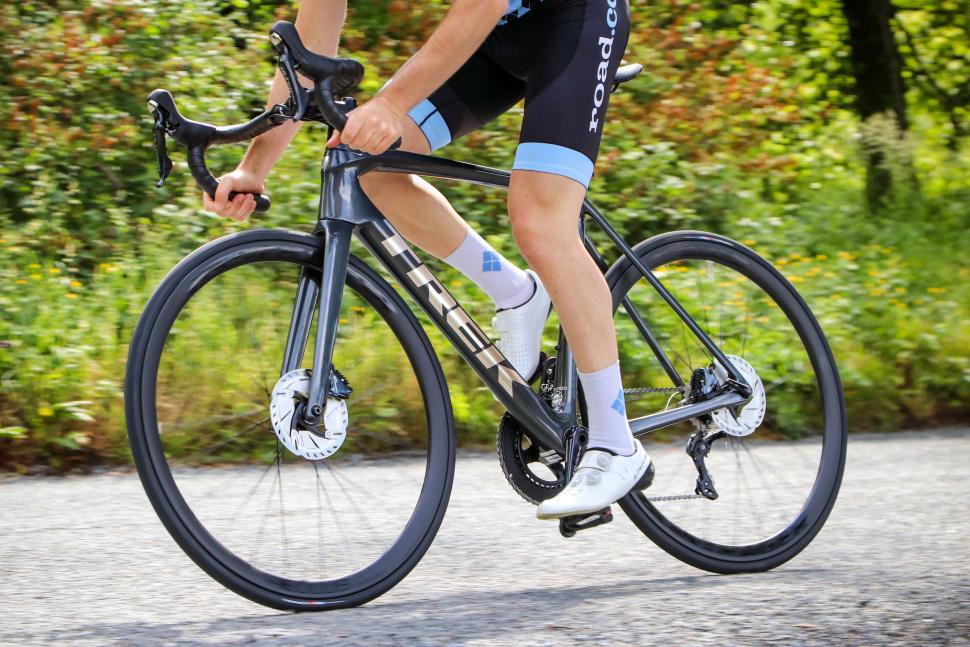
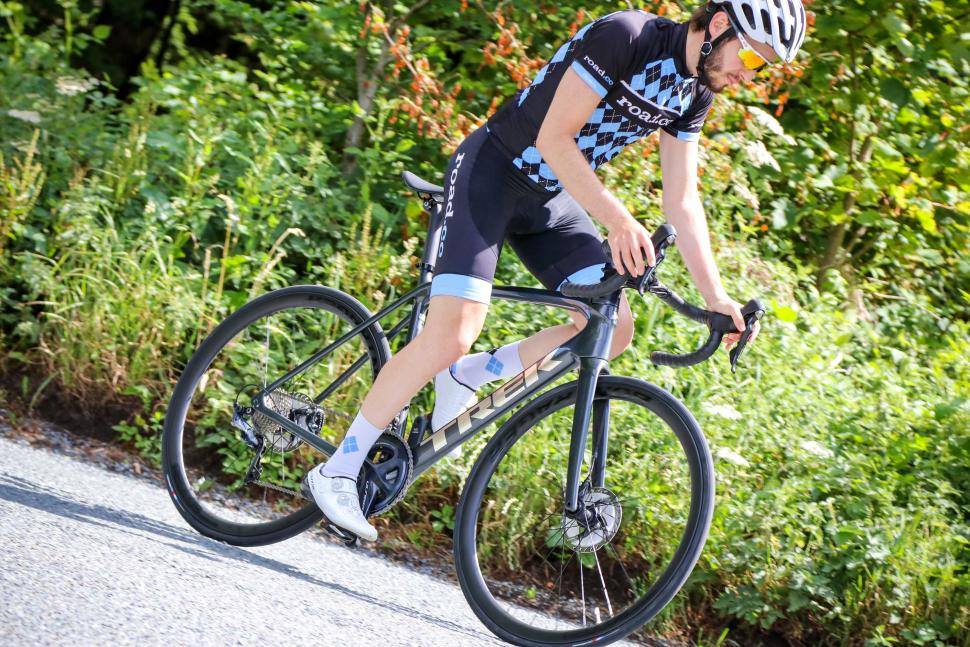
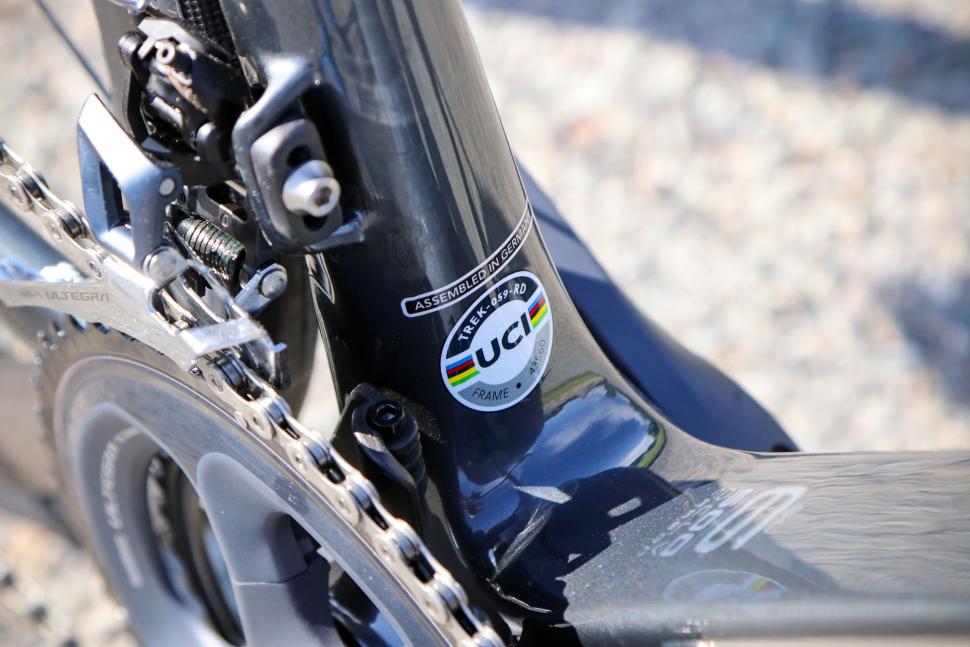
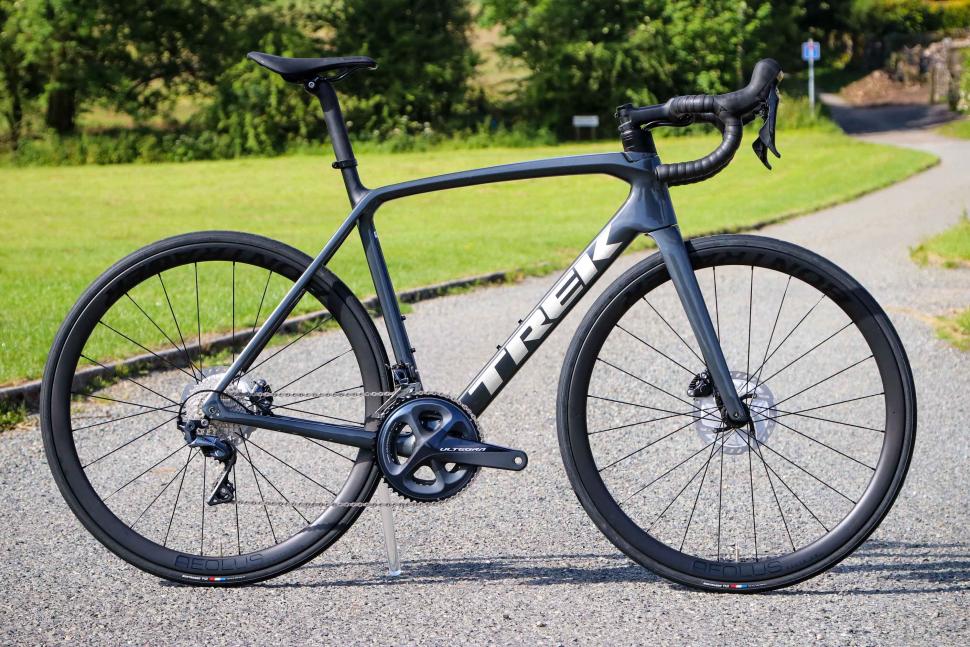
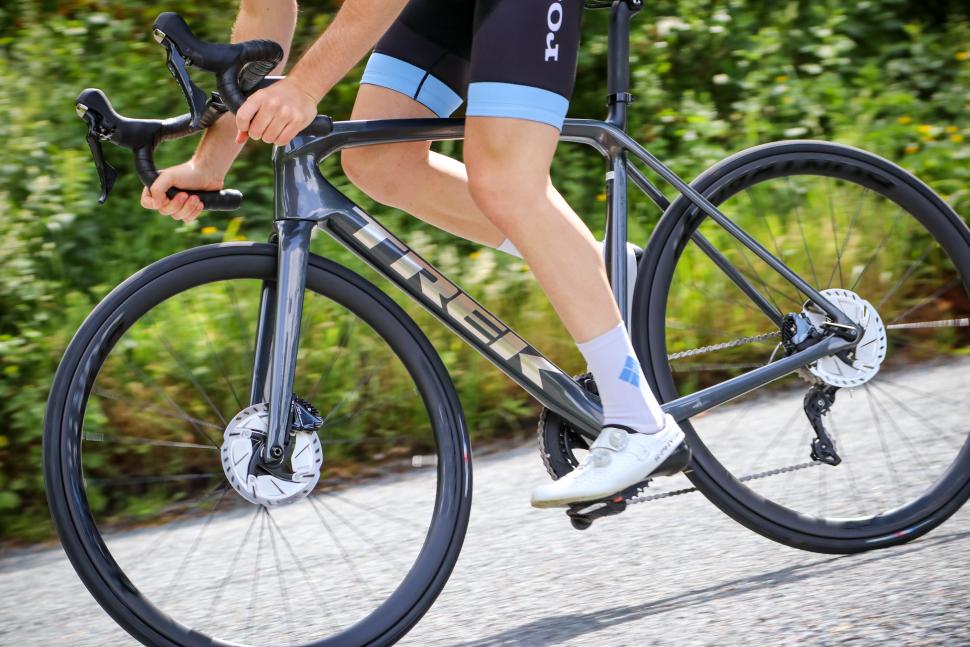
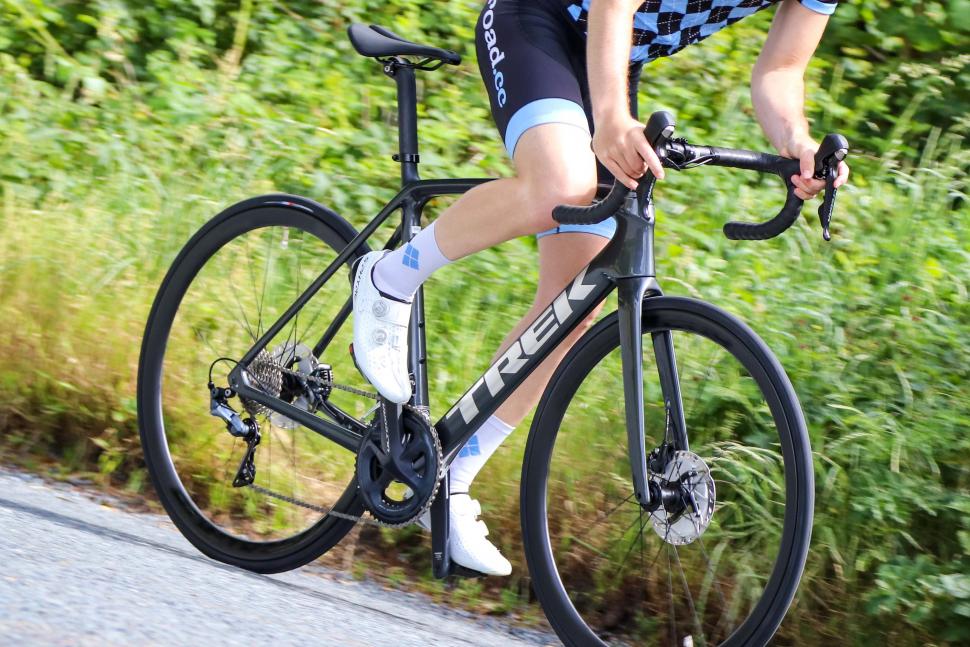
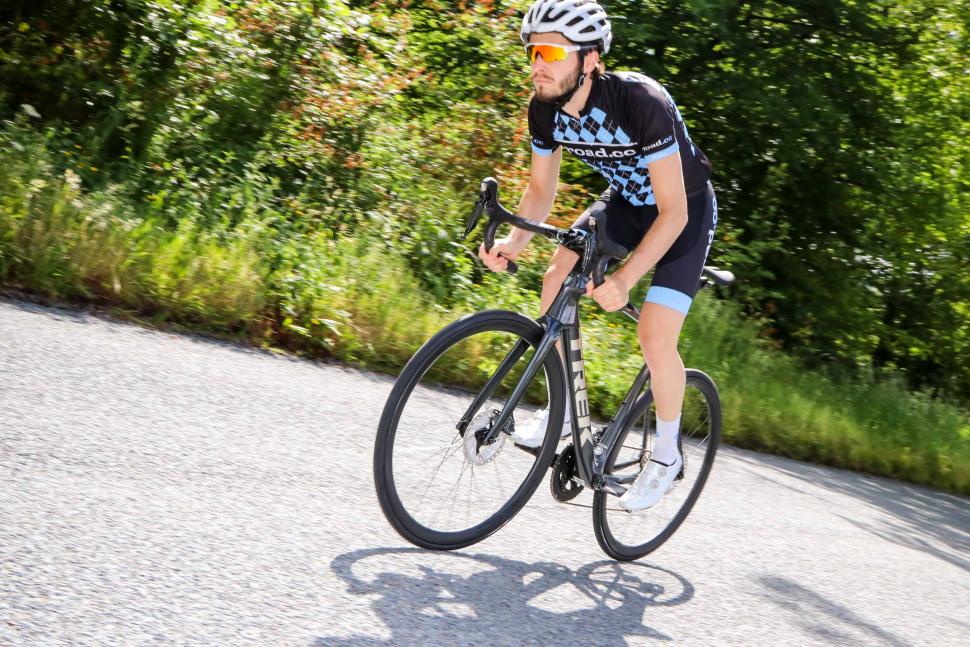
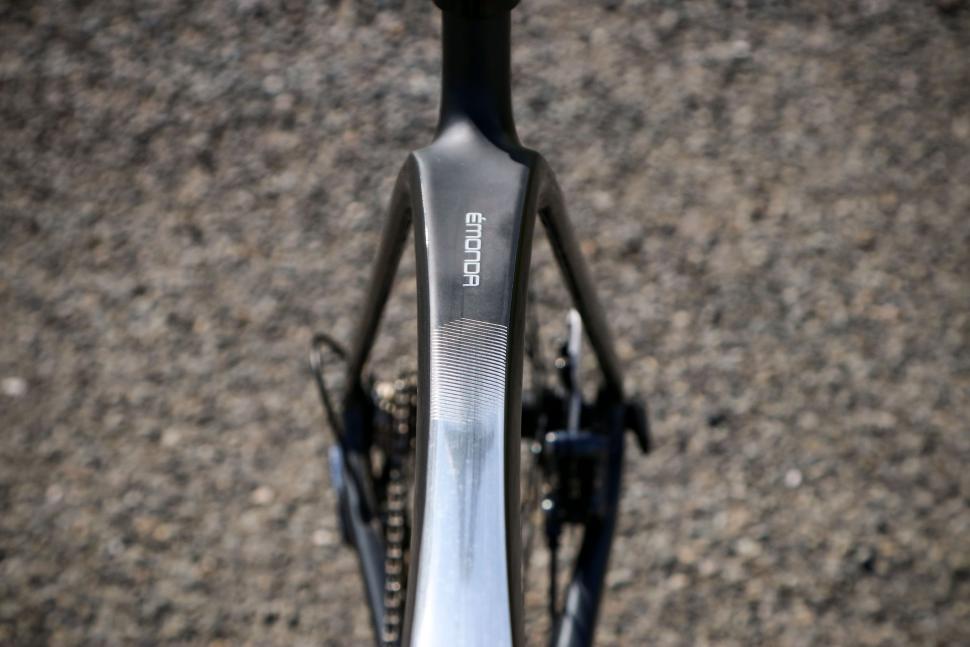

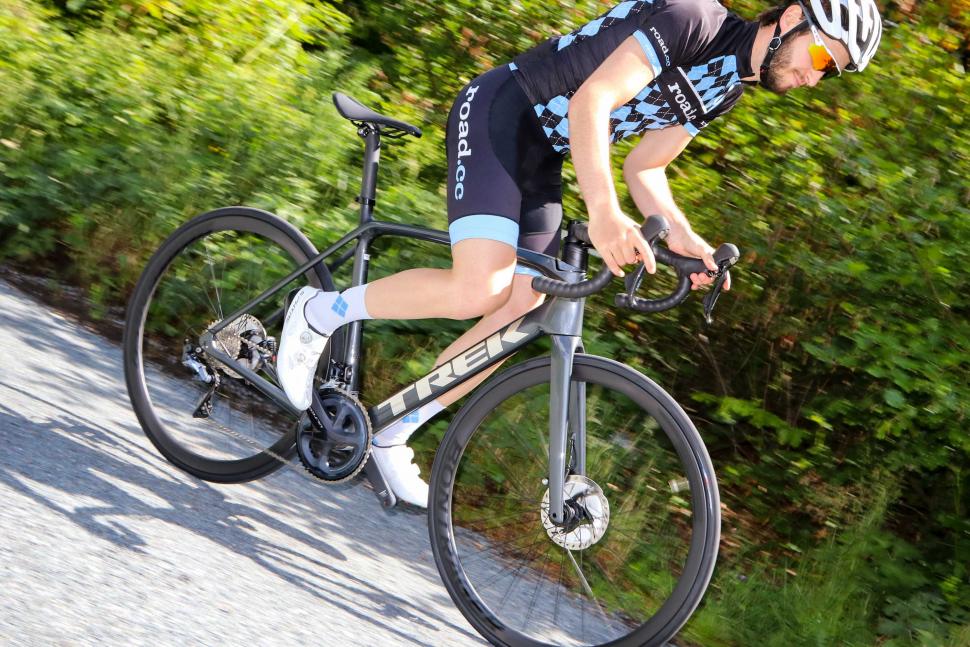
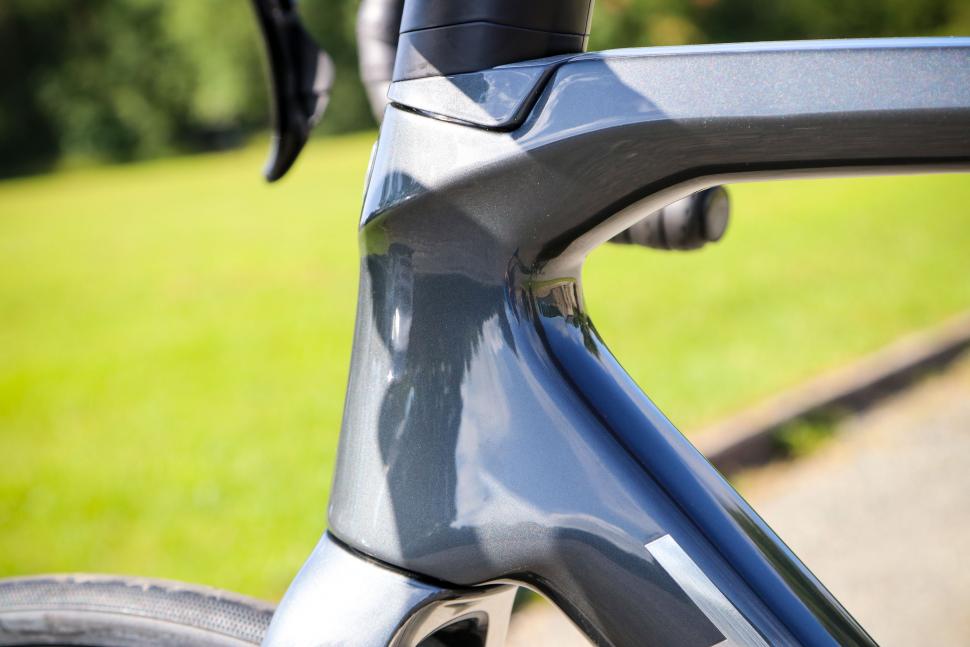
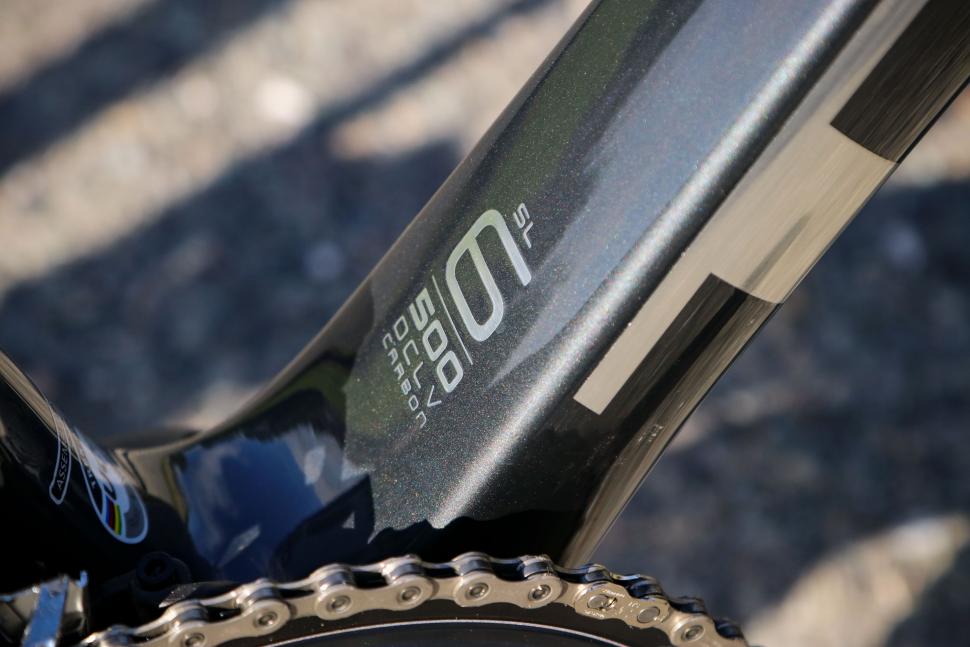
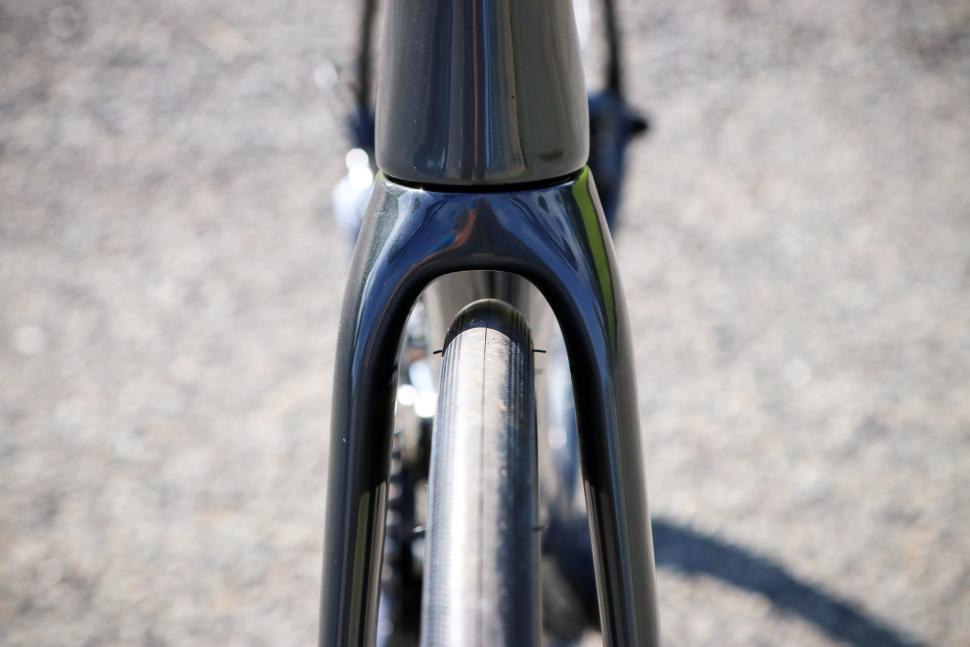
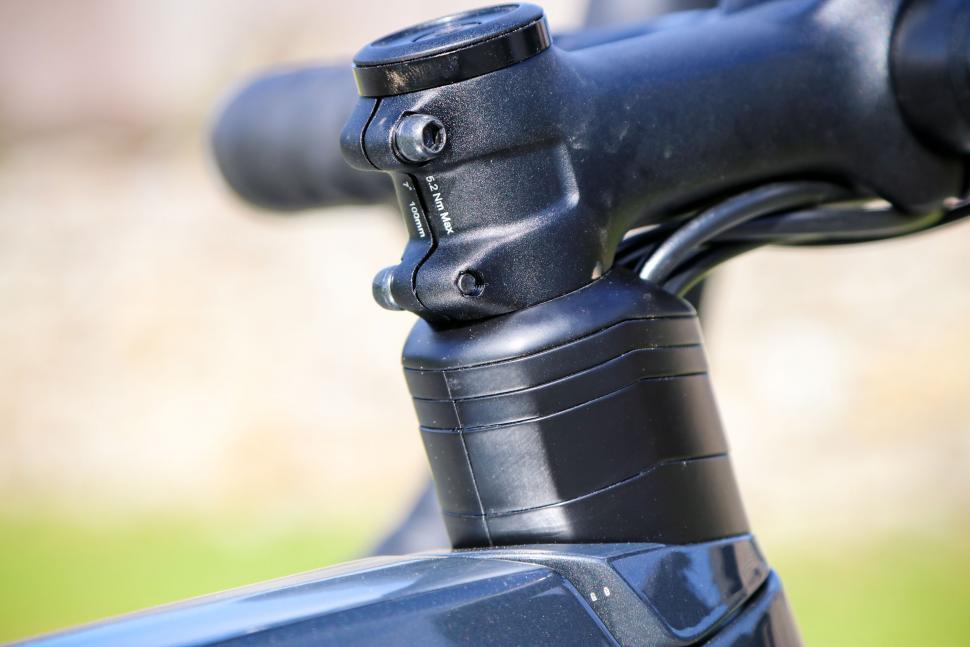
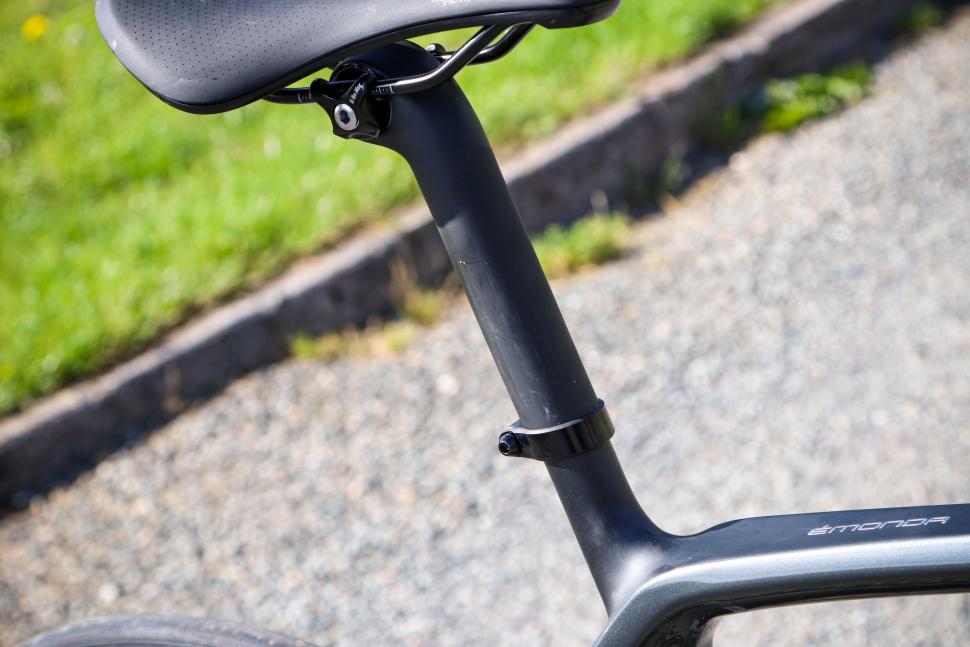

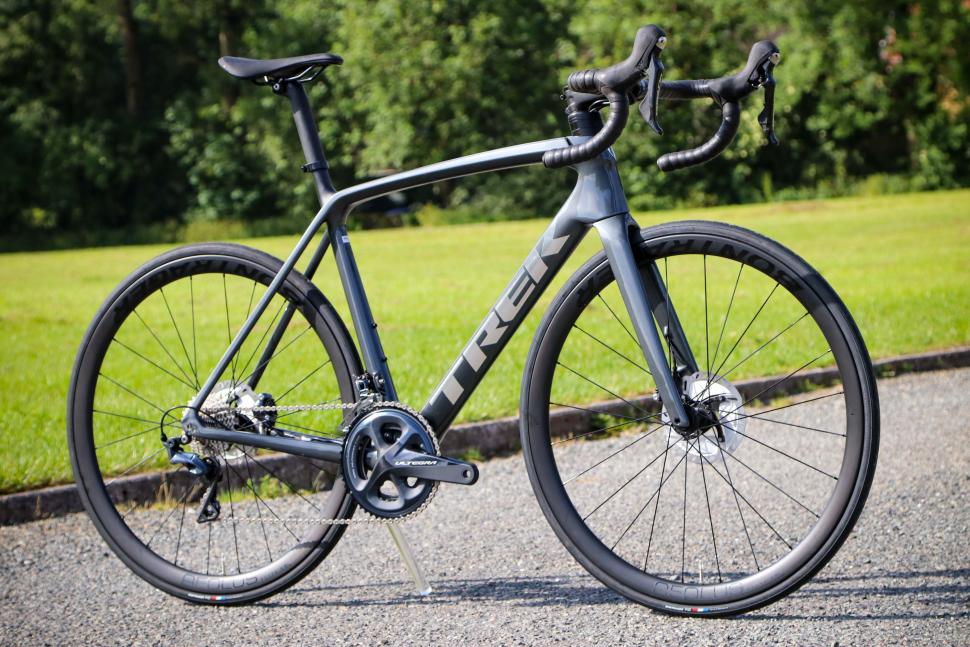
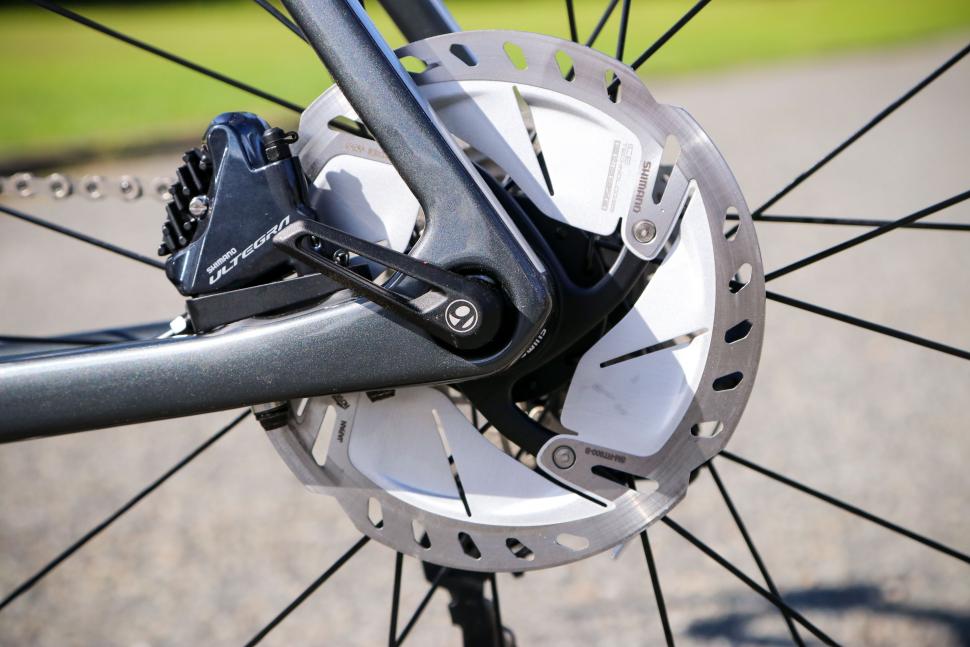
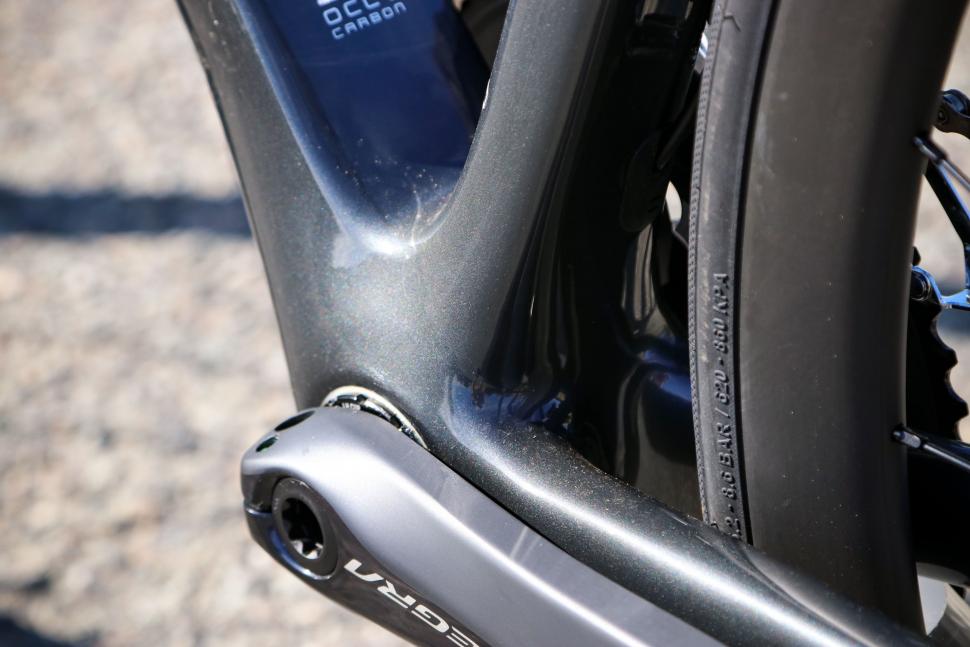


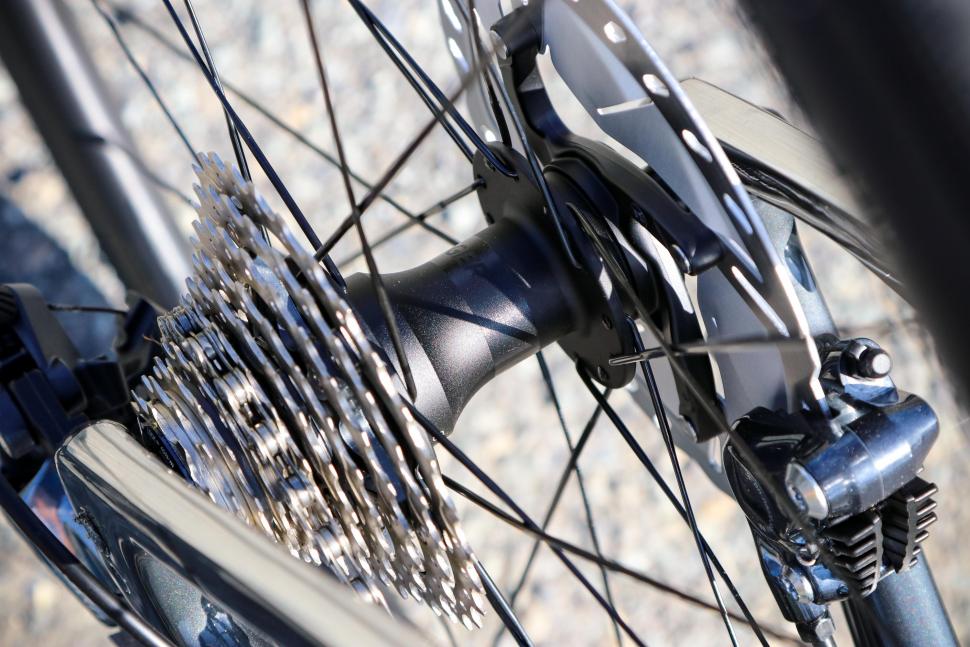
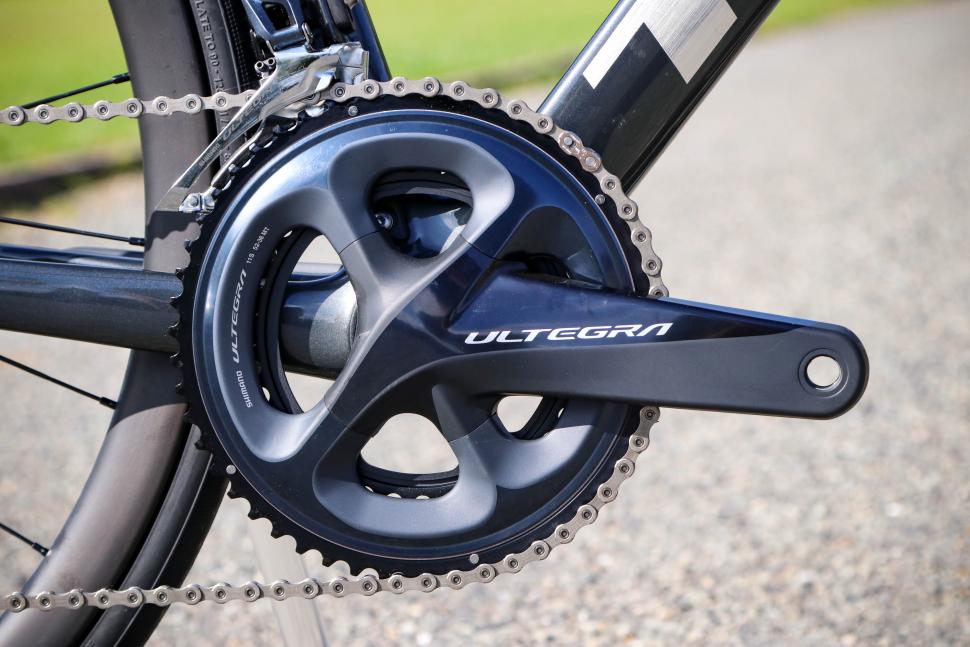

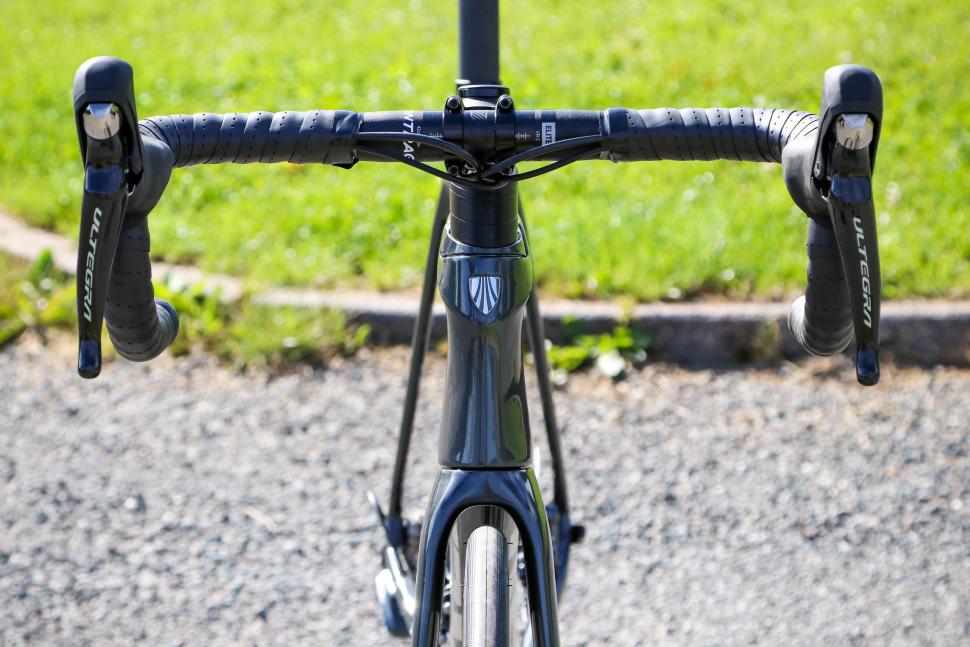
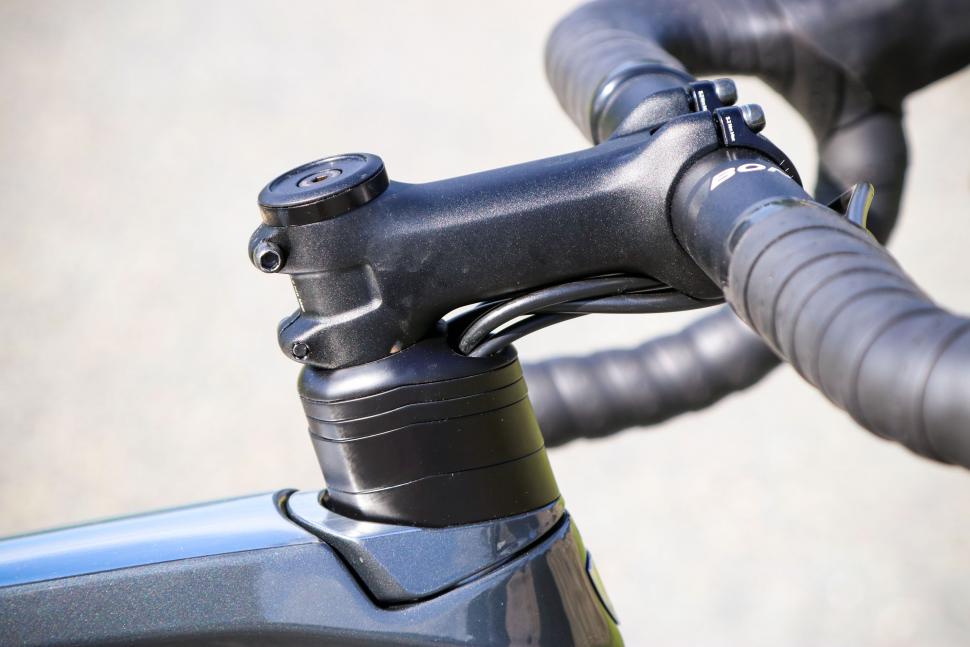
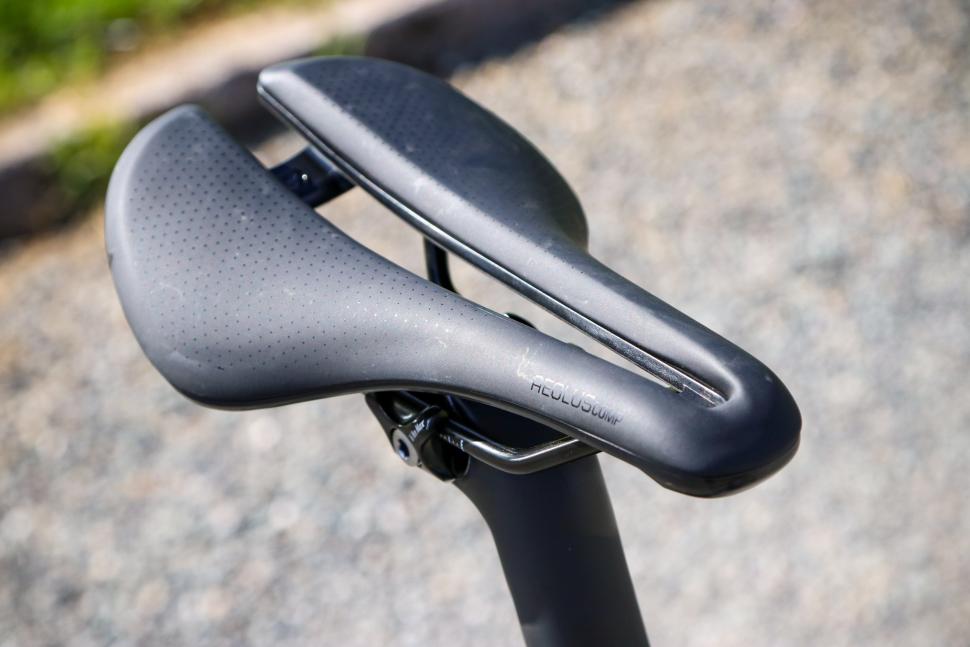


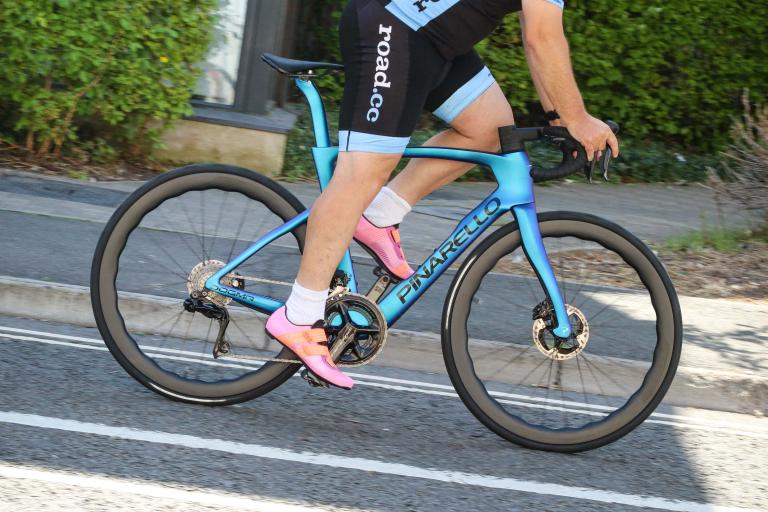

Add new comment
4 comments
8.23kg isn't 'lightweight'... that's porky. 1.4kg over the UCI minimum!
Not a big fan of the way the cables and hoses run at the front of the bar in order to fit under the stem like that, I'm surprised they haven't gone for a system where they run intrnally then under a stem cover etc
Quite a lot of money for an 8.2 kilo bike.
"Comparing the price of the near-identical SL 6 suggests you are getting them for just £450 too."
The side by side comparison of the SL6 and the pro makes them identical bar the wheels. Which listed on the trek website retail at a price difference of £250, not £450. So either the stock wheels on the SL6 are over priced on their own (then maybe the bike is too) or the only reason to buy the pro is if the Aeolus are the wheel upgrade you want over everything else on the market.
I'm still more inclined to the RC30.